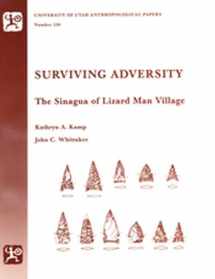
Surviving Adversity: The Sinagua of Lizard Man Village
Book details
Summary
Description
Based on more than ten years of field work, this is the only modern interpretive site report on the Sinagua culture.
Lizard Man Village is one of many small settlements in the Flagstaff vicinity occupied by the Sinagua between AD 1050 and 1300. Generally considered affiliated with the Mogollon, the major archaeological culture group in central Arizona, the Sinagua inhabited a region where three distinct groups intersected: the Mogollon, the Hohokam, and the Anasazi.
Sinagua survival strategy in this very arid region combined dispersed agriculture with hunting and foraging. It appears that an essentially egalitarian social system allowed flexibility to maximize wild resources and potential agricultural sites or vice versa. The area is characterized by a number of small villages that probably consisted of only a few families each. Precisely because Lizard Man Village is typical of such sites, the authors chose it for intensive fieldwork. According to them, "in its very ordinariness lies its importance."
Based on the site report, the authors provide interpretations for comparison to other sites in the Southwest, as well as a detailed consideration of what went on at a small Sinagua village. Using material assemblages they present a picture of social organization through successive culture phases.


We would LOVE it if you could help us and other readers by reviewing the book
Book review



